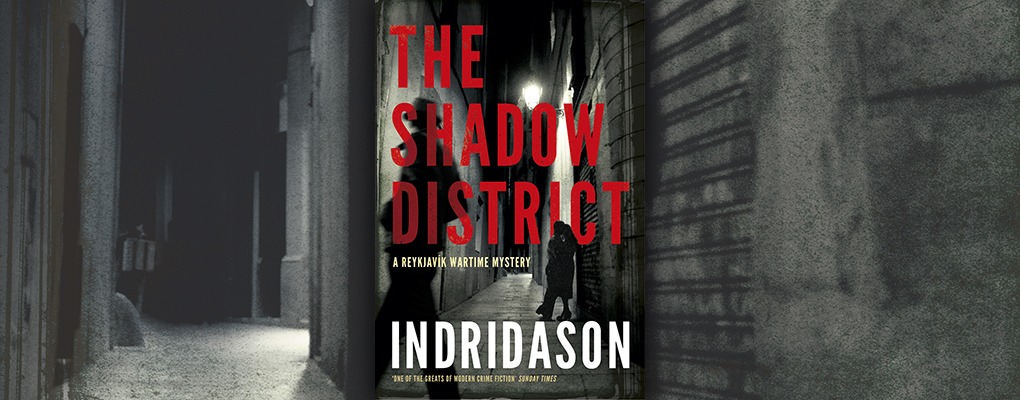Books
Review: The Shadow District by Arnaldur Indridason
In 2002 and 2003, Arnaldur Indridason won the prestigious Glass Key Award in Scandinavian crime fiction for his books Jar City and Silence of the Grave. He’s the only author ever to have won it back to back, and many would argue that he deserved another in 2010 for his sublime and poetic book Strange Shores. That was when he put his contemporary detective, Erlendur, into deep freeze and since then he’s been following up other projects.
One such project is a new series of historical crime novels set in Iceland during World War II, and The Shadow District is the opener. We are parachuted into the centre of Reykjavik in the middle of the War. Ingiborg is meeting her American lover Frank behind the National Theatre, a dark and ominous building designed to look a little bit like a fairy palace made of igneous basalt, which the island itself is formed from. Rather than a fairytale tryst, what they discover that night is the semi-clothed body of a young woman. They run off. Frank refuses to go to the police and Ingiborg is inclined to agree. Many, including her father, do not approve of ‘the Situation’: young Icelandic women fraternising with GIs.
The social and historical climate – not to mention Iceland’s bracing wind – all form a backdrop for this police procedural, which is deftly orchestrated by an excellent author. Along with the history and the crime, the story also deals with corruption and Icelandic superstition.
Icelandic cop Flovent works alongside Thorson, a Canadian with Icelandic roots who has been seconded to the American military police. Closely in sync, the pair of them work intelligently and sensitively to unravel the identity of the victim, and who killed her. The story takes place in a period of great change in Iceland, when the mores of its old, rural, subsistence society were being washed away in a flood of military money, and personnel occupying the island. Ironically, although Iceland is occupied by Americans, it is making a bid for independence from Denmark, and Indridason subtly reflects this.
The strangled girl roots the story in World War II, but much happens in the present day as well. A man called Stefan Thordarson is found dead in his bed, and the autopsy shows he was smothered with a pillow. Retired police detective Konrad decides to help his overworked ex-colleagues by looking into it. In the dead man’s flat are all kinds of newspaper cuttings about the wartime murder.
Splitting the narrative across three investigations – with Flovent and Thorson working in World War II, Stefan in the near past, and Konrad in the present day – might have led to a mightily complex storytelling challenge. And it would be easy to say that the beauty of the book is in how expertly Arnaldur Indridason unfurls his intricate historical tapestry. However, his prose (and its translation) is even more of an achievement. The writing is clean and spare, and yet you always know how the characters are feeling and what is motivating them. The mystery and the emotion wrapped up in it are what make for such a gripping read. No action thriller can move you in the same way.



Please note: Moderation is enabled and may delay your comment being posted. There is no need to resubmit your comment. By posting a comment you are agreeing to the website Terms of Use.